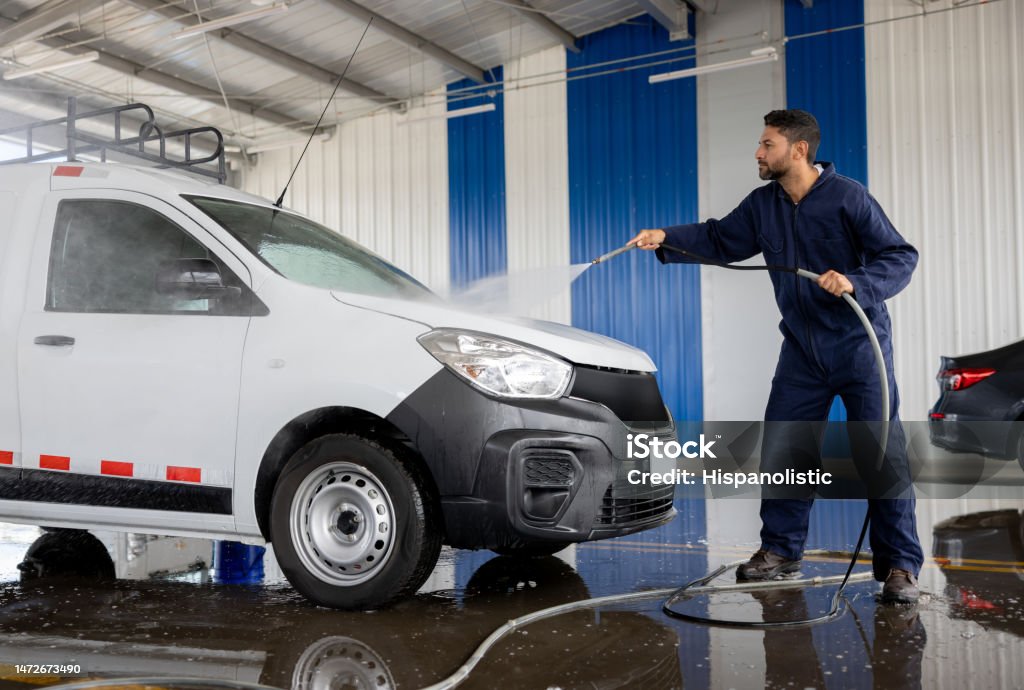How to Submit a Claim for Auto Insurance
Rico Auto Share Price: 22 Years Now

Burlington, New Jersey resident Christin Walker drives carefully. She demonstrated this by driving a school bus full of occasionally rowdy and noisy kids on both rural and urban streets for 22 years.
However, poor driving can still result in accidents. Her used 2006 Honda Civic was totaled and smashed by a hit-and-run driver who, according to the police report, zipped through a red light just over a week after she bought it.
Walker feels fortunate that she was not harmed. Less than a month later, the pedestrian was killed in another accident involving that same driver.
Among the issues are that she doesn’t have a car, hasn’t received a settlement from any insurance company, and still has to pay off the Honda loan, which is currently rusting away in a recycling facility. She becomes so irate that she files a claim with the car’s insurance company.
Walker is not by herself if she decides to file an insurance claim. Approximately 6 million police reports of crashes occur in the United States each year, as per the National Highway Traffic Safety Administration.
Every year, approximately 3 million individuals are killed or seriously injured in these auto accidents, which results in a massive volume of insurance claims and lawsuits.
Bringing an Insurance Suit Against Another Person
In the most straightforward case, you will file a claim against the other person’s liability insurance if they collide with you. We refer to this as a third-party claim: You are the other person’s third party.
The claim will be handled by the other person’s insurance, but don’t expect a prompt settlement. If the insurer wants to be sure that their customer was really at fault for the accident, they may want to look into it.
Using Your Personal Insurance to Address the Issue
If only filing insurance claims were easy, though, we could all claim to be experts in the field. Furthermore, it’s normal to believe that the person who caused the accident should bear responsibility for their actions. Even if someone else crashed into you, there are situations in which you may need to use your own auto insurance. Here’s how it might occur.
Situation No. 1: States with no faults

You always file injury claims on your own insurance first in states where no-fault insurance laws are in place. These states demand that there be personal injury safeguarding (PIP insurance) for this reason. Each state defines the requirements before you can file a lawsuit against another driver.
When a car accident occurs in a no-fault state, it is typically necessary for there to be significant harm or death before suing the other party. (In most cases, claims for property damage can still be filed under the other party’s liability insurance.)
PIP and medical payments (MedPay), a comparable type of coverage, are frequently offered in states without no-fault legislation. You and your passengers’ injury claims can be made using these.
Second scenario: An underinsured motorist
What happens if the driver’s insurance is insufficient to pay for injuries they cause to other people in an accident? If they have no assets, you can still sue them for the balance.
Perhaps it isn’t worth it. If you have underinsured motorist coverage, one choice is to use it. When the other driver doesn’t have enough insurance, it can pay for medical expenses.
Situation No. 3: Ignoring the situation
Rather than interacting with the other person’s insurance provider, you may choose to use your own insurance for vehicle damage. You can use your collision insurance to cover other people’s vehicles that are damaged.
The drawback is that the amount of your collision deductible will be subtracted from your insurance payout. If your insurance company pursues reimbursement from the other person’s insurer, you may be eligible to receive your deductible amount back at a later time.
You could also use your rental reimbursement coverage if you have it for a rental car while your car is being fixed as part of a collision claim.
Situation #4: Being unable to pay off a car loan balance
Whether you’re utilizing your own collision insurance or filing a liability claim against another party, your insurance should pay you for the car’s market value if yours was totaled in the collision.
Therefore, the issue is still not resolved. It’s possible that you will eventually owe more on a car loan or lease than the vehicle is worth. This may occur, for instance, if the majority of the car’s cost was financed or if your car has depreciated rapidly. Having gap insurance can, in any event, make the difference between
Alternatively, you could sue:
Hiring an attorney and suing the other driver is another method to obtain compensation.
In the event that the other person begins pointing fingers at you, you might need to assist in proving that they were at fault. Documents like a police report, pictures taken at the scene, and the contact details of any witnesses will help establish your innocence.
Should you have a verifiable case and the likely settlement for a car accident be small, perhaps $3,000, you may choose to file a small claims lawsuit against the other driver.
Auto Rickshaw
The majority of municipal governments have some sort of small claims court, though the laws vary by state. The average wait period for a hearing is one month, and filing fees are usually affordable.
or two. The other driver, the claims adjuster for the insurance company, and anybody else who might have been involved in the collision are among the witnesses you have the right to subpoena. Make sure you have certified estimates for the cost of repairs available, along with all of your information.
The benefit of this procedure is that it compels the insurance provider of the other party to appear in court with a representative and any witnesses required to support its position or contest the lawsuit’s amount. This may result in settlement negotiations.
When an accident occurs:

At the scene of the accident, you should take steps to protect your right to sue another party. An accident checklist can be useful in helping you collect the necessary data.
Verify your wellbeing and remain safe The first thing to do after being in a car accident is to take a step back, collect yourself, and make sure neither you nor your passengers are hurt. Even in cases of bumper bumps, soft tissue injuries are a concern, and injuries increase the risk of an insurance claim being denied.
Atul Auto Share Price
Even in the unlikely event that no one is hurt, the accident will still be stressful for both or all parties involved. In the inevitable exchange of driver information, try to keep your own and their road rage to a minimum. If you can, stop your vehicle in a safe location.
Avoid standing on a busy or fast-moving road unless absolutely necessary. And if at all possible, wait for the police while staying in the car and calling 911.
Information sharing:
Make sure the other driver or drivers receive the documentation they require in order to file a claim, and that you do as well, if they are reasonable. Really, the only thing someone else needs is the insurance information from your insurance ID card. You can print off a car accident checklist and store it in the glove box, or many insurance companies offer one in their smartphone apps.
Take pictures
Your cell phone is your most important tool in the event of an auto collision. Take images of:
- Damage to the other cars’ license plates as well as your own
- road conditions, such as snow, rain, or ice
- Anything else that could be a factor, like road signs and nearby intersections
- ID cards for other drivers’ insurance
The timestamp and date stamp of the pictures should be recorded by your phone. Any witnesses’ names and phone numbers should also be noted.
Obtain information about police officers.
The name and badge number of the responding police officer may be illegibly written on any document you receive, so be sure to confirm it. As soon as the police report is filed, get a copy and make sure it is accurate.
Speak with your insurance provider.
It doesn’t matter who was at fault—get in touch with your insurer right away. Since many insurers allow you to file claims through their mobile apps, technology may again be able to help you in this situation.
Industry group the Insurance Information Institute’s vice president Loretta Worters advises, “Make sure to submit the claim within your insurer’s time limit.” “Ask your insurer if your policy has a time limit for submitting bills, resolving claims disputes, and submitting additional information.” “Deadlines for filing vehicle damage claims are typically 30 days.”
Similar: How to Cash a Check for a Car Insurance Claim
Typical Reasons for Denials of Auto Claims
The procedure for filing auto insurance claims can occasionally be incredibly frustrating. Reasons for denying claims frequently include:
The mishap could have been prevented or preventable
If the insurance provider believes the accident could have been prevented—for instance, by allowing an unauthorized driver to operate your car—they may reject your claim.
You failed to timely file a claim.
Insurance companies want their clients to submit their claims as soon as they can. Furthermore, it makes sense to act now, before the accident witnesses have vanished or the damage has been obscured. States have the authority to impose strict time limits on filing claims, ranging from one to twenty years.
postponing medical attention
It’s possible that you are unaware of the full extent of your injuries right after an accident. However, if you put off getting medical attention for your injuries for an extended period of time, the insurance provider might become suspicious of the claim and launch an investigation or even deny it.
Following an accident, it’s critical to record the facts. If you’re not sure what happened, don’t try to guess or choose to assign blame there. It is not appropriate to be chatty during the claims process either. Refrain from sharing excessive details as it may affect the result of your claim.
What to Do If the Denial of Your Auto Claim
If your car insurance claim was turned down, get a written explanation explaining why. You should be aware of the specific grounds for the claim’s denial as well as, if required, the process for filing an appeal. Either they are mistaken, or there is a good reason for the denial (like you didn’t have the appropriate coverage for the claim).
Examine the available data, then provide a
letter outlining how the insurance company’s decision is contradicted by the evidence. If you feel uneasy challenging the denial on your own, you might want to seek legal counsel from a lawyer.
Related: When To File An Insurance Claim With A Lawyer
Recognizing Common Types of Auto Insurance Claims

It is a good idea to review your auto insurance policy after an accident to make sure you are covered. You should confirm for yourself what you are and aren’t entitled to, even though your insurance agent may have already told you. It will pay off in this situation to have a trustworthy insurer with a solid reputation.
The fundamental coverage types are provided by all auto insurance companies. States have different requirements for the remaining ones, some of which are wise purchases for optional coverage types.
Insurance against liability
The most fundamental type of coverage for all cars is liability insurance. This is essential in case you are guilty of running over a garden gnome in someone’s yard, hitting a person, or even a car. A victim’s claims for losses like medical costs, property damage, missed income, and pain and suffering are covered by liability insurance.
Sums exceeding your auto insurance may result in a lawsuit against you. A large amount of auto insurance is a way to adequately protect you and your assets if you are wealthy and have savings.
Auto Expo 2023
If you are sued for an accident that is covered by your policy, such as a car accident, liability insurance also covers the cost of your legal defense.
If you want to safeguard more than $500k, you might want to consider getting an umbrella insurance policy insurance for collisions
Jbm Auto Share Price
Unless your auto loan or lease stipulates otherwise, collision insurance is not necessary. In the event that you collide with a pole or another vehicle, this insurance will pay for the damage to your vehicle. As per the Insurance Information Institute, approximately 75% of drivers who possess auto insurance also have collision coverage.
No-fault car insurance regulations
Certain states have no-fault auto insurance laws, which eliminate the need to assign blame in order to compensate insurance for less serious injuries. Rather than filing a lawsuit, each party gets paid by their own insurance company. The coverage for these claims is known as personal injury protection.
protection against personal injury
A no-fault law is typically combined with personal injury protection (PIP). It pays for healthcare costs from a car accident regardless of who’s at fault.
READ MORE:
1. Health and Fitness Tips for You
2. Upcoming New Movies
3. Get New Jobs Directly From Companies FREE Visa
4.Latest News of Cryptocurrency and Bitcoin
5. Real Estate Business for you
6. Latest News
7. Best Insurance Policy for Everyone
READ MORE:
- 1. Strategic Management Process: Top5 Jobs In Dubai FREE VISA Apply Now
- 2. Vancouver Time fighting for $12,000 in travel insurance Nightmare FREE
- 3. DIABETIC DIET : A PROFESSIONAL’S GUIDE TO A WARM AND WELL-BEING
- 4. NICOLAS CAGE STATES : HE HAS 3 OR 4 MORE MOVIES LEFT NOW
- 5. EMPRESS CRACKS: FOR THE FIRST TIME SINCE APRIL
- 6. DESPITE MEANING: DESPITE HIGH RATES, MORE US HOME BUYERS ARE WILLING TO BUY
- 7. A 44-YEAR-OLD BOSTON WOMAN WAS KILLED BY A SHARK ATTACK IN THE BAHAMAS WHILE ON VACATION







